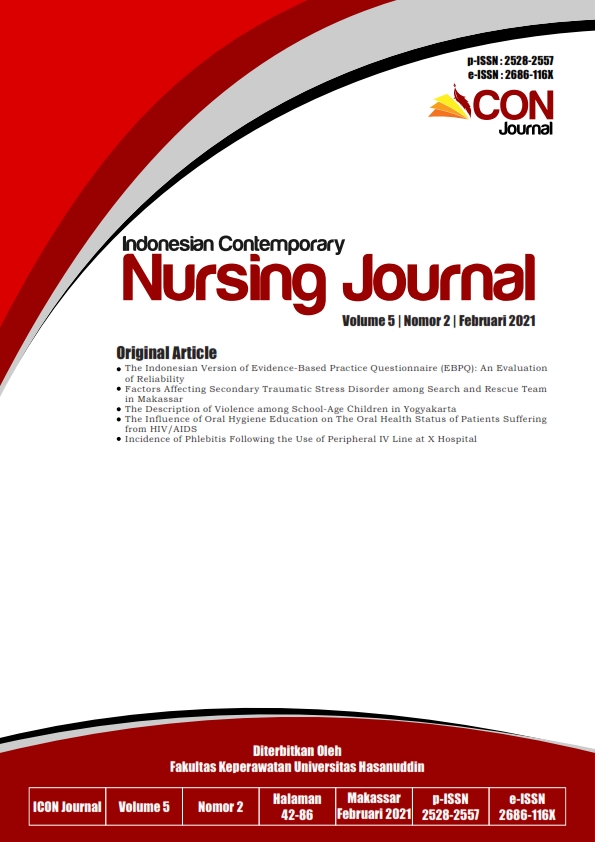The Description of Violence among School-Age Children in Yogyakarta
Keywords:
Physical Violence, Sexual Violence, Verbal Abuse, Type of Violence, School-Age ChildrenAbstract
Introduction: The occurrence of violence to students increases every year. It came from their parents, environment, and the students. The violence types were physical, verbal or emotional, sexual, and economy. There were several consequences from the violence such as disruption of the child psychic, seriously injured, or trauma. Method: This research used quantitative descriptive with cross sectional design. The population in this research was 220 elementary students in Yogyakarta. The sample of this research was 130 samples that was taken used random sampling technique. The criteria of sample were the students who allowed to participate the research with their parents or parents and never diagnose or have no mental illness beforehand. The instrument in this research was a questionnaire about violence overview that was developed by the researcher and had undertaken the validity and reliability tests. The data analysis used descriptive analysis. Result: Mostly, the violence to the students was dominated by female (51.5%) and students in the low economic background (62.3%). There was an occurrence of violence (56.9%) and verbal violence (68.9%) as the common violence. The largest violence location commonly happened at school (93.2%). Conclusion: The violence prevalence was quite large to students and commonly happened at school. Further research about the factors that influenced the occurrence of violence was needed.Downloads
Download data is not yet available.
Dimensions
Published
2021-02-28
How to Cite
Lestari, N. D., & Arum, O. P. . (2021). The Description of Violence among School-Age Children in Yogyakarta. Indonesian Contemporary Nursing Journal (ICON Journal), 5(2), 58-67. https://doi.org/10.20956/icon.v5i2.9838
Issue
Section
ARTICLES
Copyright & Licensing
Authors who publish with this journal agree to the following terms:
Authors retain copyright and grant the journal right of first publication with the work simultaneously licensed under a Creative Commons Attribution License that allows others to share the work with an acknowledgement of the work's authorship and initial publication in this journal.
Authors are able to enter into separate, additional contractual arrangements for the non-exclusive distribution of the journal's published version of the work (e.g., post it to an institutional repository or publish it in a book), with an acknowledgement of its initial publication in this journal.
Authors are permitted and encouraged to post their work online (e.g., in institutional repositories or on their website) prior to and during the submission process, as it can lead to productive exchanges, as well as earlier and greater citation of published work (See The Effect of Open Access).
Authors retain copyright and grant the journal right of first publication with the work simultaneously licensed under a Creative Commons Attribution License that allows others to share the work with an acknowledgement of the work's authorship and initial publication in this journal.
Authors are able to enter into separate, additional contractual arrangements for the non-exclusive distribution of the journal's published version of the work (e.g., post it to an institutional repository or publish it in a book), with an acknowledgement of its initial publication in this journal.
Authors are permitted and encouraged to post their work online (e.g., in institutional repositories or on their website) prior to and during the submission process, as it can lead to productive exchanges, as well as earlier and greater citation of published work (See The Effect of Open Access).

